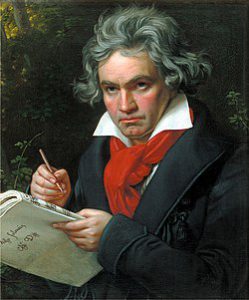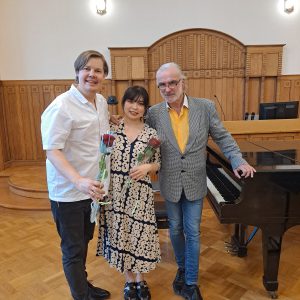Varkauden KesäKlassinen -festivaali 8.-10.7.2022
Markus Hallikaisen perustama festivaali täytti tyhjiön Pohjois-Savossa eli loi korkealuokkaisen taidetapahtuman keskelle kesää Varkauden keskustaan ja ympäröiviin paikkoihin, kirkkoihin ja kartanoihin. Olin mukana kolmatta kertaa, mutta itse festivaali täytti nyt viisi vuotta. Ajankohta, heinäkuun alku, sopii niukin naukin Mikkelin festivaalin ja Savonlinnan väliin, mutta kuulijoita oli tänä vuonna kaksi kertaa enemmän kuin aiemmin, joten ei se taida haitata.
Festivaalin erityisluonne syntyy Hallikaisen omasta soittimesta, sellosta.Voi erityisesti sanoa, että kyseessä oli sellojen juhlaa. Huippuna Heitor Villa-Lobosin Bachianas brasileiras nr. 1 kahdeksalle sellolle ja Bachianas nr. 5 jonka iki-ihanan cantilenan, Villa-Lobosin tunnetuimman melodian, lauloi sopraano Laura Pyrrö. Muistan kun Luciano Berio vieraili Helsingissä 90-luvulla ja meillä oli dialogi Helsingin yliopiston juhlasalissa; sen jälkeen kysyin, oliko hän tuntenut Villa-Lobosin: Berio alkoi heti hyräillä tuota melodiaa.
Hallikaisen kutsumista taiteilijoista monet ovan hänen kurssitovereitaan Zürichista, kuten Jussi-Matti Haavisto, altto (oikeastaan säveltäjä) ja Elias Nyman, viulu. Muutkin soittajat ovat nuoremmasta päästä kuten Kalle-Pekka Koponen, sello, Tampereen filharmoniasta, Iiris Piri, Eemil Kautto, Juho Peltonen, Elias Lassfolk, Lappeenrannan orkesterin konserttimestari, ja monet muut. Varttuneemman polven kotimaiset kuuluisuudet Hannu Kiiski, Timo Törmä ja Lassi Viljanen esiintyivät ja olivat tuoneet paikalle eteviä oppilaitaan. Festivaali ei siis koostunut vain irrallisista konserteista, vaan myös niiden välit oli täytetty musiikilla. Avajaisten väliajalla soitti Rufus Sinkkonen Bachin soolosellosarjaa teknisellä varmuudella ja ihmetystä ja ihailua herätti tapahtuman nuorin, 10-vuotias sellisti Veikko Aarnio Saint-Saënsin Joutsenella ja Massenet’n Thaisin rukouksella. Mikä varma ote soittimeen, kiinteä, täyteläinen ääni ja kyky muotoilla romantiikan teoksia runollisesti. Heikki Peltonen puolestaan vakuutti innolla, jolla hän paneutui Sibeliuksen harvemmin kuultuihin selloteoksiin illalla Kaksi Ruusua ravintolan tilaisuudessa. Jenni Olli oli festivaalin 2022 ’Nuori muusikko’.
Päävieras oli kansainvälinen kuuluisuus Raphael Wallfisch, Hallikaisen opettaja Zürichista. Hän on soittanut Euroopan johtavilla lavoilla ja levyttänyt kaiken keskeisen sellokirjallisuuden. Siksi hän oli kiinnostunut myös sellaisista harvinaisuuksista kuin Villa-Lobosin sellosonaateista, jotka lupasin lähettää hänelle.
Avajaiskonsertin ohjelma oli myös lukuisia uutuuksia tarjoava. Harvat tietävät, että Popperilla on muutakin kuin Rukki, ja tässä tapauksessa vielä Requiem. Juutalaisteema näyttäytyi myös ohjelmassa, ts. Ernst Blochin Baal Shem ja Max Bruchin Kol Nidre, yksi juutalaisen musiikin kulmakiviä, hymni, jota on laulettu kaikkialla. Juutalainen musiikkihan ei ole sama kuin juutalaisten musiikki, koska monet kuuluisat juutalaissäveltäjät mielletään osaksi klassisen musiikin yleistä perintöä Felix Mendelssohnista, Gustav Mahlerista, Arnold Schönbergistä György Ligetiin ja Mauricio Kageliin. Mutta silti on myös elementtejä, jotka ovat periytyneet juutalaisten pitkien vaellusten aikana heidän lauluistaan, temppelimusiikista ja kletshmer-soitosta omaan tyyliinsä. Keväällähän mm. kuultiin Helsingissä tuiki tuntematonta ruotsalaista säveltäjää Moses Pergamentia, joka oli suomalaista syntyperää. Hän aikoi säveltää Wagnerin Ringiä vastaavan tetralogian juutalaisen kansan historiasta, mutta ei ehtinyt toteuttaa sitä, vaikka olisi hyvin kyennyt.
Rossinin soolosellotoes Une larme on teos, jota voisi verrata Bottesinin kontrabassovariaatioihin Moise in Egitto. Wallfisch toteutti Une larmen virtuositeetin suvereenisti. Edelleen Dvořákin viehättävä ja tunnelmallinen Waldesruhe kuuluu tuohon sarjaan metsän innoittamia teoksia Sibeliuksen, Wagnerin, Schumannin, Lisztin, Collanin ja Čiurlioniksen rinnalla.
Odotettu numero oli tietenkin jo edellämainittu Villa-Lobos-osasto.
Tänä vuonna Brasilian valtio täyttää 200-vuotta ja samalla heillä juhlitaan myös tapahtumaa Semana de arte moderna São Paulossa 1922, eli siitäkin on pyöreät 100 vuotta. Ko. viikko aloitti modernismin tuossa jättiläismaassa. Brasilian lähetystö oli siis mukana tämän osion järjestämisessä … ja juhla jatkuu Helsingin yliopiston juhlasalissa 7.9. 2022 klo 16 Villa-Lobos -konsertilla, johon on vapaa pääsy.
Bachianasit ovat paluuta Bachiin, mutta Villa-Lobosilla myös Brasilian kansanmusiikkiin, sillä tuon yhdeksän opuksen sarjan jokaisella osalla on aina Bachiin viittaava nimi, esim. Preludio ja brasilialainen otsake kuten Modinha, tunteellinen romanssi 1800-luvulta. Jotkut osat ovat äärimmäisen hitaita, raukeita, staattisia, kontemplatiivisia … heijastaen iberisen kulttuurin näkemystä ajasta, joka alkaa joka päivä aina uudestaan. Portugalilaiset eivät tuoneet kelloja uuteen maailmaan, toteaa brasilialainen sosiologi Gilberto Freire. Jostain syystä ei taaskaan kuultu teoksen kolmatta osaa fuugaa. Se on viime aikoina jäänyt usein pois. Pelkäävätkö sellistit sitä, kysyin Hannu Kiiskeltä. Ei, mutta sitä jotkut pitävät vähemmän onnistuneena.
Mutta iki-ihanan Bachianas nr. 5:n melodia on taas tuollainen nostalginen, hyräilevä, osittain suljetuin huulin, bocca chiusa, laulettava sävelmä, kun taas säestys jäljittelee kitaran näppäilyjä hengästyttävän nopeasssa tempossa. Laura Pyrrö oli tämän teoksen antaumuksellinen ja hieno tulkki.
Festivaali jatkui ja tarjosi runsaasti ohjelmaa. Elias Nyman soitti mm. päätöskonsertissa Varkauden pääkirkossa vakuuttavan hienolla soinnilla Haydnin viulukonserton. Kirsti Lumiala oli jälleen avannut Lumialan kartanon ovet salonkikonsertille, jossa esiintyi trio Sanna Kokko,viulu, Markus Hallikainen, sello ja Henrik Nissinen, piano. Erityisesti on ylistettävä kautta festivaalin esiintynyttä pianisti Risto Laurialaa, joka soitti lukemattomien eri partnerien kanssa venyen lukuisiin eri tyyleihin ja tapoihin. Hän oli yksi festivaalin keskeisiä voimia.
Kaikkea kolmipäiväisen festivaalin rikasta ohjelmistoa en pysty tässä mainitsemaan. Aivan selväksi tuli, että tapahtuma on kasvusuunnassa niin esiintyjien kuin yleisön lukumäärän suhteen. On järkevää valita aina joitain kokoavia teemoja, niin kuin nyt oli mm. Villa-Lobos – ja sellaista musiikkia jota ei muuten juuri kuulla. Jäädään siis odottamaan ensi kesää. Varkaus on nyt päässyt Suomen musiikin kartalle!
— Eero Tarasti



